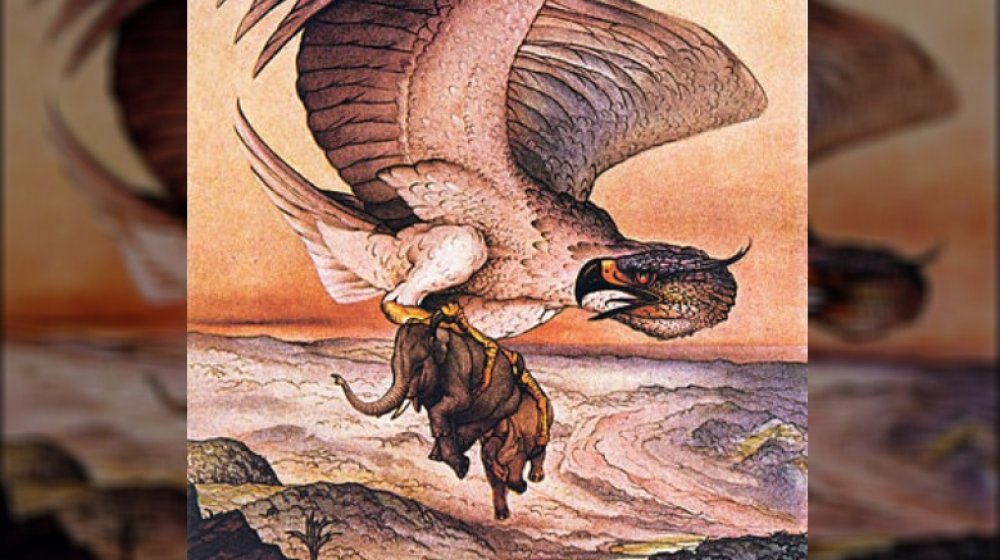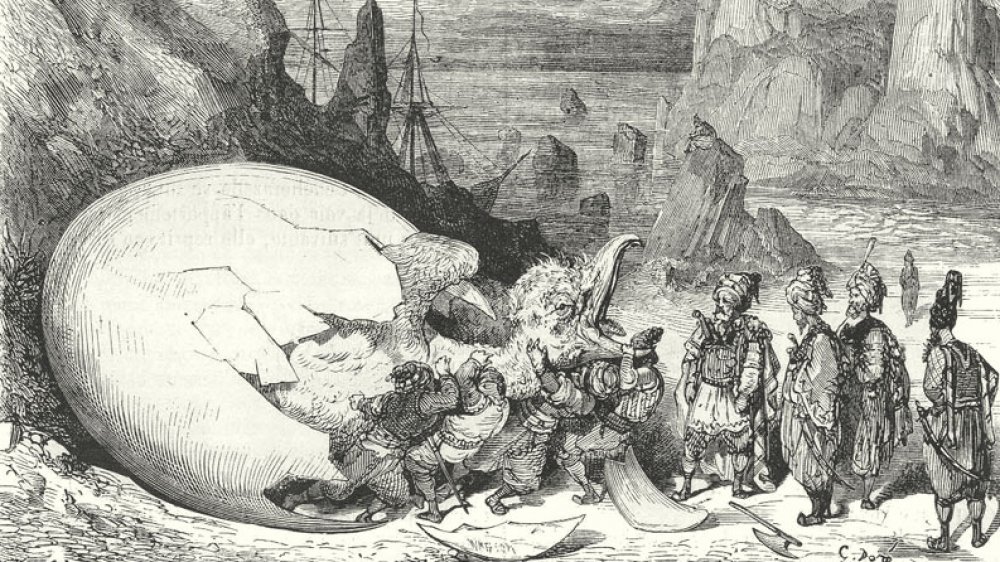The Legend Of The Mythical Roc Explained
Long before Jumanji, long before Moana, even long before The Mummy Returns, back when Dwayne Johnson was still the Rock ... long before all of that, there was another kind of "Roc," who played with people's emotions and fears and sense of the mythic. Not a professional wrestler, but still a beast: the Roc. No K, thank you very much, though, per Mythology, though sometimes also spelled Rukh, Rokh, or Ruc, so if you're confused, you're forgiven.
The animal in question is one of those magnificent mythical creatures that certainly ranks within the "Isn't that a cool idea?" category of creative things like flying horses and microwave popcorn. Unlike some fantasy (or so you hope) creatures, such as griffins (a combo of a lion and eagle), centaurs (humans and horses), and/or merfolk (humans and tuna), the Roc wasn't a hybrid. Instead, the Roc relied on sheer scale to impress anyone who happened to be in the neighborhood. And impress it did.
Sinbad the Sailor met a Roc
The backstory of the Roc is clouded in history, as these things often are. Kreol Magazine says the Roc was native to the Seychelles. Mention arises in India, around 39 CE. Ancient Sanskrit documents refer to a big bird — no, bigger than that — whose beating wings, a wingspan of 48 feet, could cause wind forces rivaling those of cyclones. This living dinosaur was said to be vaguely eagle-like in appearance, and the Roc also sported a long, thin, forked tongue sliding out between sharp, pointed teeth. Some stories claim the Roc guarded a secret treasure, but mostly the tales dealt with terror from the skies.
Marco Polo claimed to have actually seen one, back in the 13th Century, en route to China. Although Rocs were widely credited with sometimes feasting on larger game — for instance, humans, which they would feed, alive, to their nestlings — Polo went one better, relating that Rocs were known to swoop down, latch on to an elephant, soar, and then drop the elephant to its death. The Roc would then flutter down and dine at its leisure.
As Mythology.net explains, the text of A Thousand and One Arabian Nights relates Sinbad the Sailor's encounter with a Roc, which saved him from a shipwreck. Sinbad repaid the bird's kindness by eating one of its eggs. Mayhem ensued. And not in a good way.

